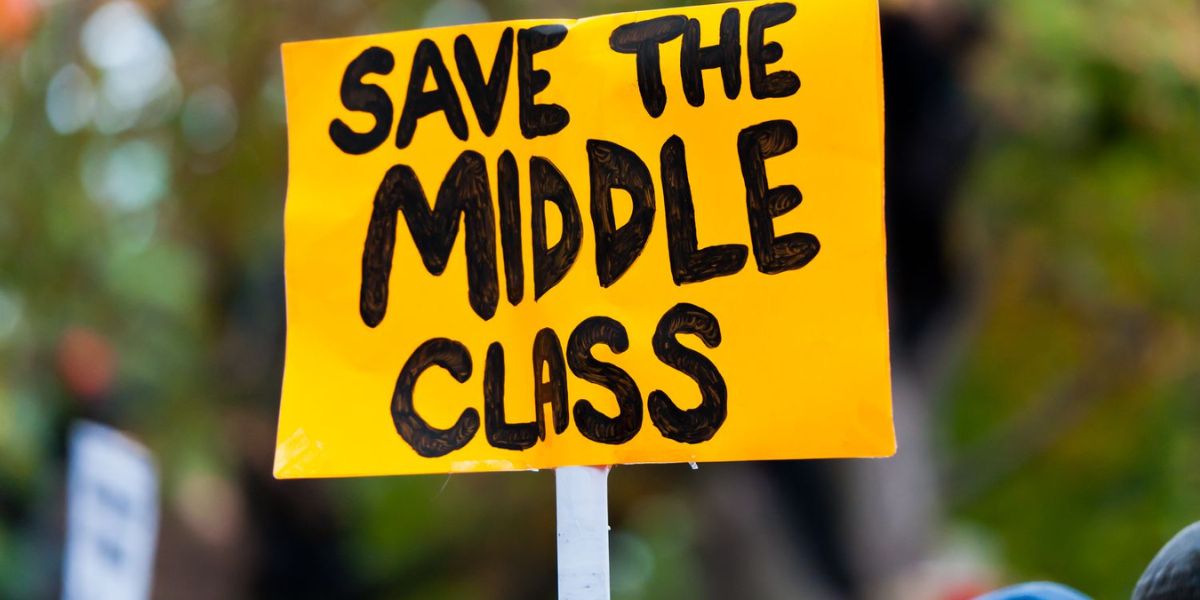The terms “middle class” and “upper-middle class” are often used interchangeably, but in reality, they represent distinct income levels and lifestyle differences, which vary significantly depending on where you live. What qualifies as “middle class” or “upper-middle class” can fluctuate across states due to differences in cost of living, average wages, and other regional economic factors.
Understanding the income gap between these two categories requires looking at these variations and how they impact people’s lives in different parts of the country.
What Defines the Middle Class vs. the Upper-Middle Class?
In general, the middle class is typically defined as households that earn enough to afford a comfortable standard of living but not to live luxuriously. These individuals are often able to cover basic expenses, such as housing, healthcare, and education, but they may still need to budget carefully. The upper-middle class, on the other hand, represents households with higher incomes who enjoy more financial freedom. They typically have the ability to invest, save significantly, and live more comfortably without constant worry about financial strain.
The specific income thresholds for these classes can vary greatly from state to state. While nationwide figures might suggest a household income between $50,000 and $150,000 falls within the middle class, the cost of living in a place like New York or California could push higher incomes into the middle-class category, leaving lower-income brackets for those in less expensive states.
How Cost of Living Affects Income Classifications
One of the biggest factors that distinguishes the middle class from the upper-middle class is the cost of living. In more affordable states such as Mississippi or West Virginia, an income of $50,000 might afford a more comfortable lifestyle, putting someone firmly in the middle class. However, in high-cost areas like New York, California, or Washington, D.C., the same income may barely meet the basic needs of an individual or family, pushing the definition of “middle class” much higher.
For example, a household earning around $100,000 a year might be classified as middle class in less expensive regions but could be considered upper-middle class in more expensive cities. The line between these two groups can shift depending on how far that income stretches in each location. Consequently, someone making the same salary in two different states could have very different living experiences.
Income Thresholds Across States
State-specific data shows a clear divide in the income ranges for middle and upper-middle-class families. In states like Massachusetts or California, an upper-middle-class household might earn upwards of $200,000, which allows for significant disposable income and the ability to invest. On the other hand, in states like Alabama or Arkansas, households earning around $100,000 or slightly more may fall into the upper-middle-class category, with ample space for savings and financial growth.
According to the U.S. Census Bureau, the median household income in the United States was approximately $70,784 in 2021. In states with a higher cost of living, middle-class households might earn considerably more to maintain similar living standards. For instance, in areas like the San Francisco Bay Area, middle-class households may need to earn $150,000 or more to meet basic living expenses, pushing many individuals into the upper-middle class by default.
Class and Lifestyle Differences
In addition to income, lifestyle plays a crucial role in differentiating between the middle and upper-middle classes. The upper-middle class tends to have more opportunities for personal and professional growth, greater access to advanced healthcare, and the ability to invest in higher education and luxury goods. They may have disposable income for vacations, entertainment, and retirement savings that provides a more secure and comfortable lifestyle. In contrast, middle-class families often work within a budget, with a greater reliance on employer-provided health insurance and fewer opportunities for leisure spending.
The upper-middle class also often enjoys a larger safety net in terms of financial stability. If a job loss or emergency arises, they have the resources to cover expenses without significant hardship. Conversely, middle-class families are more likely to feel financial stress from an unexpected event, which could lead to debt or disruption of their financial plans.
Conclusion
The difference between middle class and upper-middle class is not solely determined by income, but also by how far that income can go in a particular state. Understanding these distinctions is essential when evaluating economic security, opportunities for upward mobility, and overall quality of life.
As the income gap between these two categories continues to evolve, so too will the way these classes are defined across different regions of the country.
Ultimately, the key to defining one’s class status lies in the broader context of cost of living, lifestyle choices, and financial security in each unique state.







